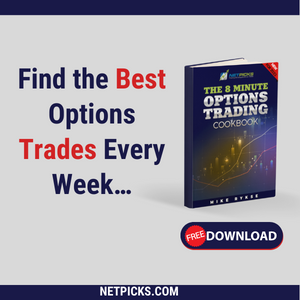NFT Marketplaces Explained: Everything A Beginner Should Know
Over the last couple of years, the NFT (Non-fungible token) marketplace gained quite a lot of traction in the financial circles. That shouldn’t come off as a huge surprise. A little over a year ago, back in 2020, the NFT market was estimated at a respectable $232 million. Over the course of 2021, that number grew to a staggering $22 billion.
This development couldn’t pass unnoticed and these days NFTs stand as some of the hottest investment options casting a huge shadow even on the always relevant digital currencies like Bitcoin.
But, what exactly are Non-fungible tokens? Are we talking about the yet another ‘get rich and get out as soon as possible’ scheme we have seen countless times during the last decade or we are talking about the legit long-term investment worth your attention?
Let us try to find out together.
What Exactly is an NFT?
This is a perfectly good question since the technology is still relatively new and most people who are willing to put money into it don’t have a clear idea of what kind of commodity we are talking about here. So let us start with the very term ‘non-fungible’ which describes some commodity that is unique and can’t be replaced with something else. For instance, one Bitcoin is fungible since it can be traded for another identical Bitcoin. Mona Lisa is not fungible since it doesn’t have an artistic counterpart.
NFTs can be best described as digital assets that share the same qualities we described above. They can be digitized drawings, GIFs, digital art, music recording, or any other digital data that can be uniquely identified and can’t be replicated.
How are NFTs created?
So, let’s say you have encountered a Dogecoin gif that is considered an NFT and subjected to trade. What makes it any different from countless other gifs you encounter every day that can be replicated and used without any restrictions? The short answer is that NFTs commodities are associated with pieces of data stored in a blockchain that, unlike the image, song, or any other pattern they represent, are associated with non-interchangeable blockchain units of data that serve as a certificate of ownership and authenticity.
That makes them vastly different from digital currencies that share a similar blockchain infrastructure but don’t produce a unique digital footprint that comes associated with artistic representation.
How are NFTs Traded?
At a very high level, NFTs are a part of the Ethereum blockchain. Because of that, trading the NFTs means that you will need to follow the same steps you would take when trading digital currencies. The first one is to find a secure NFT marketplace where you will be able to trade your assets without any concern regarding the safety of your investment.
Also, you should always remember that the NFTs are a part of the Ethereum family. If you want to be able to trade these assets quickly and without any delays, you should set up a reliable crypto-wallet, install browser extensions necessary for fast trading and fill in your account with a healthy amount of Ethereum coins.
NFT Market Forecasts
With all things said above, we can see that NFTs are definitely riding on a wave of renewed interest in digital currencies we have seen over the last couple of years. Do these assets have a future of their own or will they forever be tied to the fate of the digital currencies, most notably Ethereum?
According to relevant sources, things will most likely take the first path we mentioned and the NFT market will score a 25.9% increase by the end of 2031. Namely, the NFTs are tapping into too many trendy sensibilities to lay down their arms any time soon. Also, these digital assets built themselves into the very core of blockchain gaming which should give these non-fungible pieces of art long-term and sustainable relevance.
Tips for Investing in NFTs
For the very end, let us quickly go through a couple of tips that should make sure your investments are well-placed and able to produce long-term returns.
- Do the background research – Even though we are talking about a booming market, not all NFTs are made the same. Doing quick background research can go a long way in determining if you are investing in a viable commodity or fueling a scam.
- Diversify the investment – The crypto sector is still considered very volatile. So, putting all of your eggs into the NFTs may not be the most prudent path to take. We suggest you shake up your portfolio with a healthy mix of NFTs, digital currencies, and real-life stocks.
- Avoid emotional investments – In other words, you should stay away from investments that sound too good to be true, or you feel emotionally attached to. In both these cases, you won’t be able to make clear-headed, impartial decisions.
In conclusion
We hope this article gave you some general outlook about the present-day NFT market. This new digital commodity was, by far, one of the most impressive financial performers during the previous year. Even though the chances that we are going to experience the same surge are very slight, NFTs will, by all relevant indicators, remain an integral part of the modern financial world. As long as you are careful, take enough time to discern the viable investments, and make sure to expand your portfolio with other assets, you should be able to use this new trend to your advantage.
This post originally appeared at MoneyMiniBlog.
Category: Commodities, crypto




